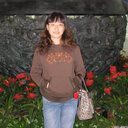Comparisons of carbohydrate-utilizing enzymes inhibitory effects and chemical profiles of five deeply colored food extracts.
Palavras-chave
Resumo
Deeply colored food has attracted great interest of researchers as they can be loaded with health-promoting compound. Extracts from five deeply colored food (Black currant, Wild rice 1, Black bean hull, Wild rice 2, and Mulberry) were chosen and carried to evaluate the carbohydrate-utilizing enzymes inhibitory effects and compare the chemical compound profiles to lock the candidate compound for the enzymes. Although the contents of total phenolics in five extracts were at comparable levels, the anthocyanins and flavonoids contents varied widely. Especially for the extracts from Black bean hull, the compositions of phenolics and anthocyanins characterized by UPLC-QTOF-MS/MS were significantly different from other samples. In addition, the inhibitory effects of Black bean hull on α-amylase demonstrated approximately half of that of acarbose at the same concentration while its inhibitory effect on α-glucosidase was doubled of that of acarbose. The inhibition kinetics illustrated that Black bean hull had reversible and uncompetitive inhibitory effect on α-glucosidase with the IC50 value being 11.37 μg/ml. Pearson's correlation analysis showed that the contents of total flavonoids and α-glucosidase inhibition were more relevant, and the B-type proanthocyanins was presumably the main active substance. PRACTICAL APPLICATIONS: Carbohydrate-utilizing enzymes are potential therapeutic targets of diabetes since they could balance the postprandial blood glucose. Anthocyanins, the natural pigments with flavonoid structures, are being attracted by citizens and researchers because of their high antioxidant effect. Anthocyanin extracts from Black bean hull among other four deeply colored food could be an alternative anti-hyperglycemic agent and copigments in anthocyanin extracts are the candidate for α-glucosidase inhibition.



